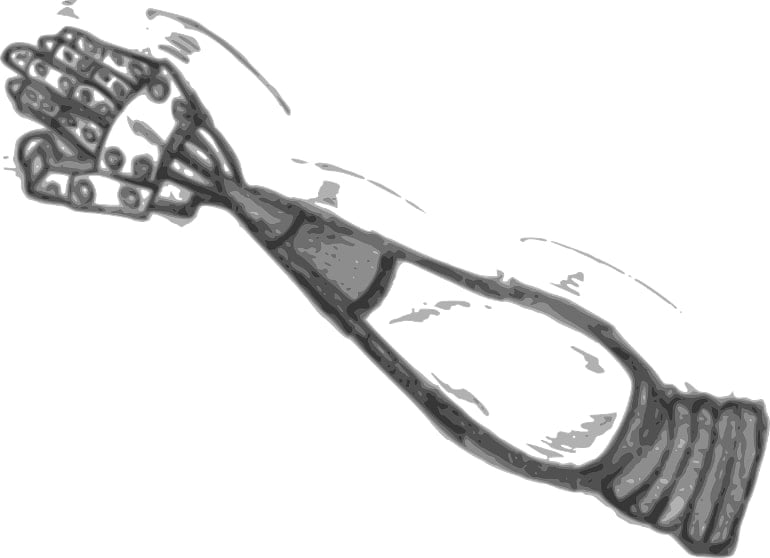Summary: Researchers have developed a virtual robotic arm that can be controlled by a person’s feet in a virtual environment to provide an “extra” limb. After training, users reported feeling the virtual limb felt as though it was part of their physical body.
Source: University of Tokyo
What would you do with an extra arm, or if like Spider-Man’s nemesis Doctor Octopus, you could have an extra four?
Research into extra, or supernumerary, robotic limbs looks at how we might adapt, mentally and physically, to having additional limbs added to our bodies.
Doctoral student Ken Arai from the Research Center for Advanced Science and Technology (RCAST) at the University of Tokyo became interested in this research as a way to explore the limits of human “plasticity” — in other words, our brain’s ability to alter and adapt to external and internal changes.
One example of plasticity is the way that we can learn to use new tools and sometimes even come to see them as extensions of ourselves, referred to as “tool embodiment,” whether it’s an artist’s paintbrush or hairdresser’s scissors.
To explore these concepts in action, teams at the University of Tokyo, Keio University and Toyohashi University of Technology in Japan collaborated to create a virtual robotic limb system. They then asked participants to perform tasks in virtual reality (VR) using the virtual limbs.
“We investigated whether virtual robotic arms, as supernumerary limbs, could be perceived as part of one’s own body, and whether perceptual changes would occur regarding the proximal space around the robotic arm,” said Arai.
Participants wore a head-mounted display to give them a first-person view of their own arms represented in VR, as well as the additional virtual robotic arms. They then had to perform tasks using only the virtual robotic arms, which were controlled by moving their toes.
Tactile devices returned sensations from the virtual robotic arms to the tops and soles of their feet when they touched an object, like a virtual ball.
Once the participants learned how to use the virtual system, they reported feeling like the virtual robotic arms had become their own extra arms and not just extensions of their real arms or feet.
“The scores of subjective evaluation statistically became significantly higher for ‘sense of body ownership,’ ‘sense of agency’ and ‘sense of self-location,’ which are important measures of embodiment, where the supernumerary robotic limb is able to become part of the body,” said Arai.
The team also found that the participant’s “peripersonal space” (the area around our bodies which we perceive as being our personal space) extended to include the area around the virtual robotic arms.

As Arai explained, “We succeeded in capturing the positive association between the perceptual change in visuo-tactile integration around the supernumerary robotic limbs (peripersonal space), and the score change of subjective evaluation of feeling the number of one’s arms increased (supernumerary limb sensation).”
Next, the team wants to look at the potential for cooperative behavior between participants’ own arms in virtual reality and the virtual robotic arms.
“Investigating the mechanisms and dynamics of the supernumerary limb sensation reported here from the standpoint of cognitive neuroscience will be important in exploring human plasticity limits and the design of supernumerary robotic limb systems,” said Arai.
The hope is that by understanding the perceptual changes and cognitive effort required to operate a supernumerary robotic limb system in VR, this will aid in designing real-life systems in future which people can use naturally just like their own body.
About this robotics research news
Author: Joseph Krisher
Source: University of Tokyo
Contact: Joseph Krisher – University of Tokyo
Image: The image is in the public domain
Original Research: Open access.
“Embodiment of supernumerary robotic limbs in virtual reality” by Masahiko Inami et al. Scientific Reports
Abstract
Embodiment of supernumerary robotic limbs in virtual reality
The supernumerary robotic limb system expands the motor function of human users by adding extra artificially designed limbs. It is important for us to embody the system as if it is a part of one’s own body and to maintain cognitive transparency in which the cognitive load is suppressed. Embodiment studies have been conducted with an expansion of bodily functions through a “substitution” and “extension”.
However, there have been few studies on the “addition” of supernumerary body parts.
In this study, we developed a supernumerary robotic limb system that operates in a virtual environment, and then evaluated whether the extra limb can be regarded as a part of one’s own body using a questionnaire and whether the perception of peripersonal space changes with a visuotactile crossmodal congruency task.
We found that the participants can embody the extra-limbs after using the supernumerary robotic limb system. We also found a positive correlation between the perceptual change in the crossmodal congruency task and the subjective feeling that the number of one’s arms had increased (supernumerary limb sensation).
These results suggest that the addition of an extra body part may cause the participants to feel that they had acquired a new body part that differs from their original body part through a functional expansion.






